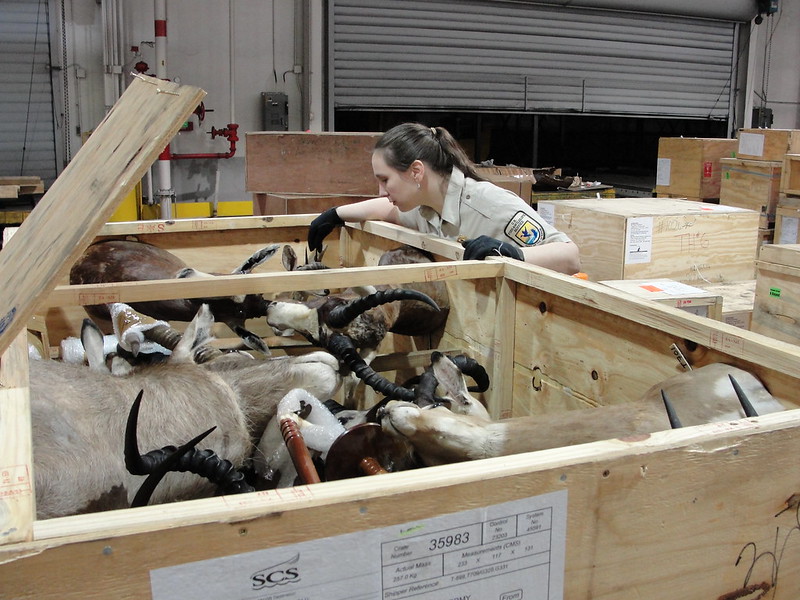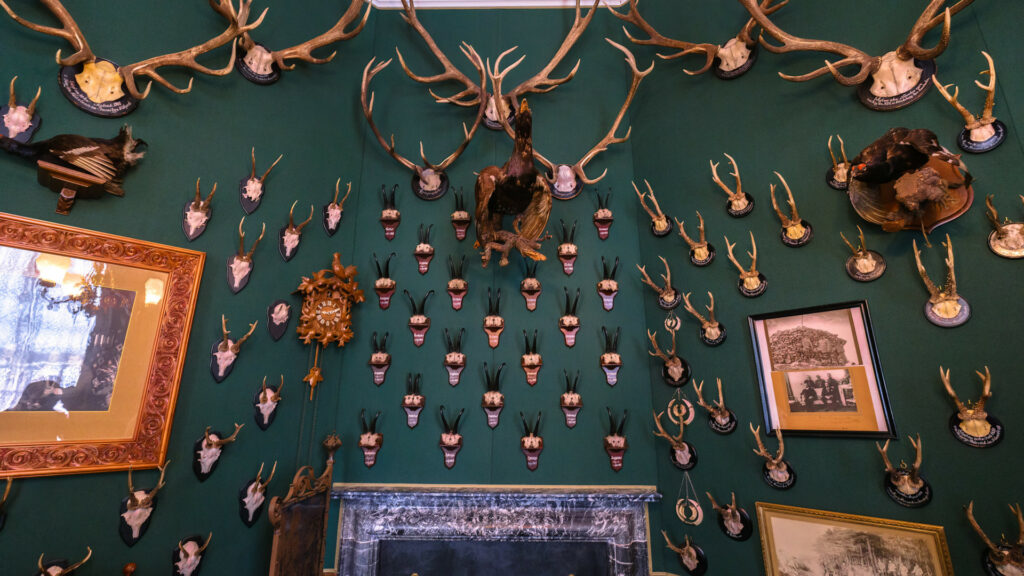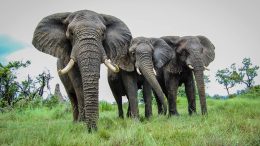The United Kingdom’s House of Lords is considering a bill that proposes to ban trophy-hunting imports into the country. The bill passed its second reading on June 16, after having passed through the House of Commons. It will now go to the committee stage of the Upper House (Lords), which is expected to rule in favor of its passing, if perhaps in amended form.
Meanwhile the global industry that feels threatened by the bill has pushed its propaganda machinery into overdrive.
Its carefully scripted narrative goes something like this: We all hate the idea of African wildlife being killed, dismembered and reassembled into a trophy for someone’s wall as a reminder of some conquest that was cruel and hardly sport in any meaningful sense of that word. But we must live with this necessary evil, because, counterintuitively, trophy hunting is killing to conserve.
In the UK media, even the likes of George Monbiot have nailed their pro-hunting colors to the mast, if reluctantly. In another example of this narrative, Professor Amy Dickman — in a letter to the Financial Times — opines that trophy hunting ultimately saves more animals than it kills and dismisses any criticism as merely “virtue-signaling.” With wildlife trade researcher Dilys Roe, she aired a video lecture that explains why all of us should be a bit slower to condemn trophy hunting.
It can all be very confusing. The latest broadside is that anyone opposed to trophy hunting is not only “virtue-signaling” but an unwitting perpetrator of neocolonial attitudes toward African people, telling Africans how to run their countries. Those of us who associate the trophy hunting of big game with men in white hats and big rifles traipsing through private reserves (or public ones initially created to protect animals from being trophy-hunted to extinction) are actually the neocolonialists.
Thankfully, environmental anthropologist Sian Sullivan has illuminated what is going on here with a great degree of academic skill and rigor. In a newly published article in the Journal of Political Ecology, Sullivan shows that the trophy-hunting industry has become adept at employing subversive narratives to greenwash its extractive activities.
Sullivan opens where the story begins. In 1996 Safari Club International established its African Chapter. It was designed, among other things, to sensitize new provincial and national governments to “wildlife as an economic development and rural development and management tool.” It similarly sought to expand opportunities for hunting into “tribal lands…linked to rural development.”
One can see how this plays out everywhere now. We are told that in rural areas, where few jobs are available, we should not deprive local Africans of scarce job opportunities created by trophy hunting. That very little of this income accrues at the household level, and most goes up the chain to operators and concession owners, is inconvenient but typically ignored in favor of clever-sounding soundbites.
Alongside this Safari Club strategy, “community-based natural resource management” initiatives were established, initially by the Southern Africa Regional Programme in Zambia and Zimbabwe and then into other countries such as Botswana — often with core funding from USAID, in which “sustainable use” of wildlife was promoted as a pragmatic approach to conversation.
The soundbite stuck: “If it pays, it stays.”

“Sustainable use” basically means that wildlife can be extracted by commercial operators external to rural African communities in exchange for (some) money and protein. How equitable, meaningful or sustainable this is remains an unanswered question. As Sullivan notes, anyone who points out how “sustainable use” is used as a vehicle to advance elite interests “often seems to prompt systematic attempts to silence or block ‘errant voices.’” Safari Club and academics who defend trophy hunting largely employ the same language, and SCI makes sweeping comments on its website, such as “The science is clear: hunting results in more wildlife, more wild landscapes and a better coexistence with nature.” As Sullivan shows, the science is far from clear, but anyone who raises questions about it is going to be dismissed as pushing a western neocolonial animal-rights agenda.
The oft-repeated claim is that the sport generates funds for local communities, but there’s little even in the best peer-reviewed literature I’ve reviewed that quantifies this benefit or details how the money is distributed. That’s why many academics have at least been honest enough to say that trophy hunting could generate revenue for local communities if it was well governed.
But corruption remains rife in the industry, which is invariably not well governed. For instance, we see no public science informing us how the maximum sustainable yield for elephants in Botswana was determined, which is meant to inform the country’s annual hunting quota. The numbers seem to be randomly chosen and even more randomly allocated across concessions, as if elephant populations were static. Also, nobody seems to want to answer why Tanzania’s Selous Game Reserve (now the Nyerere National Park) lost at least 60,000 elephants from 2009 to 2014, while 19 of the 20 concessions were dedicated to trophy hunting.
In part two of her paper, Sullivan provides a comprehensive definition of trophy hunting as a “consumptive form of commodified wildlife utilization involving the killing of animals considered and constructed as ‘wild,’ and the transportation and export of preserved parts of their bodies as objects effecting recall of a hunting event.” This is a “sport” that serves elite interests while being framed as necessary for maintaining animal population health. Standard greenwashing.
Sullivan then details the volume of endangered species extracted from African countries through trophy hunting between 2013 and 2022. Roughly 4,200 trophies are reported as having been exported; importers report receiving 4,800. Lags in the reporting system create uncertainty, as the numbers often don’t tally. By specific animal in the listing of species “threatened with extinction,” leopards are by far the most popular, with 3,154 trophies exported in the past decade. While 203 elephant trophies are reported to have been exported (from CITES Appendix I), 455 are reported as imported, a discrepancy that seems alarming.

While Botswana’s elephants are listed on CITES Appendix II (not endangered), the government has set a quota for 336 animals to be shot in 2023, and over 200 were shot last year. The government typically argues that this will reduce human-elephant conflict by increasing the tolerance threshold for such conflict among local community members whose crops are often destroyed. It also argues that Botswana suffers from elephant over-population. However, zero evidence suggests that trophy hunting reduces conflict or makes any impact on a supposed over-population problem (a claim also unsupported by any evidence). In fact former President Ian Khama put an end to trophy hunting in 2014 precisely because wildlife numbers were in sharp decline. Botswana then became a haven for elephants from neighboring countries, which continued to suffer poaching epidemics while allowing trophy hunting.
The evidence against the trophy hunting of elephants is extremely strong. In just one recent scientific paper, which is never cited by trophy-hunting proponents, elephant conservation researcher Connie Allen and co-authors write:
“Our results challenge the assumption that older male elephants are redundant in the population and raise concerns over the biased removal of old bulls that currently occurs in both legal trophy hunting and illegal poaching. Selective harvesting of older males could have detrimental effects on the wider elephant society through loss of leaders crucial to younger male navigation in unknown, risky environments.”
Those opposed to the UK trophy import ban are quick to argue that African countries significantly rely on trophy-hunting revenue, but this significance is either not quantified or stated without quantifying the opportunity costs such as those indicated by Allen and colleagues.
Moreover, conservationists who virtue-signal that they would never virtue-signal are slow to acknowledge counterarguments. Those of us who disagree with trophy hunting as a necessary conservation tool have argued that alternatives to trophy hunting exist but often aren’t trialed because trophy-hunting presence crowds them out.
The disinformation campaign from the trophy hunters is powerful and well-funded. At Safari Club’s 50th annual convention in January 2022, an evening banquet raised “over US$15 million for SCI’s advocacy and conservation efforts,” according to Sullivan. One example of subversion will suffice: The “Inclusive Conservation Group” utilized the first word in its name not to run genuinely inclusive conservation programs, but to run social media campaigns worth over $500,000 from 2016 to 2017, financed by SCI’s Hunter Legacy 100 Fund but falsely employing the word “inclusive” to gain legitimacy. The #LetAfricaLive campaign “vigorously promoted the idea that any critique of trophy hunting is a form of neocolonialism.” Facebook removed the campaign because of the way in which real people were used to create the perception of wide-spread support of their narratives by leaving comments on post by media entities and public figures, which they deemed to be “deceptive” as they blurred the line between healthy debate and manipulation.
Talking of manipulation, a recent piece by journalist Jared Kukura reveals that UK charity Jamma International “pumped millions of dollars into sustainable use propaganda.” Kukura documents the “sustainable use” groups who have taken “money from Jamma… with the specific intention of communicating a positive view of trophy hunting.” Jamma has sponsored an astonishing array of propaganda material designed to promote trophy hunting as necessary to conservation.
Sullivan closes off with a case study of Namibia, often touted as the model child for how trophy hunting revenues can contribute to conservation. The reality here is that trophy hunting businesses are mostly run from freehold farms appropriated from Indigenous Africans through settler colonialism. She concludes that local communities don’t benefit, and that “income concentrates upwards towards the hunting operator whilst low incomes and precarity characterize the employment of African ‘trackers and skinners and ‘support staff.’”
The ways in which trophy hunting exacerbates inequality doesn’t fit the narrative that it’s a countercolonial method of conservation and redistribution. To the contrary, Sullivan writes, “this is an industry that consolidates rather than transforms circumstances of hyper-inequality that plague countries such as Namibia, even as hunting advocates repeat the lie that the flourishing or rural households and communal area wildlife alike is dependent on trophy-hunting extractivism.”
Sullivan has spoken truth to power, but you can expect that she will be dismissed as one more leftist greenie with zero expertise.
We shouldn’t let that happen. The UK must ignore the propaganda greenwashing and finally pass this long-awaited trophy-hunting import ban — and other nations should follow their example.
The opinions expressed above are those of the author and do not necessarily reflect those of The Revelator, the Center for Biological Diversity or their employees.
Previously in The Revelator:
Lion-Hunting by Trump Donors Is Awful, But the Trade in Lion Bones Is Worse


